Imagine stepping into your backyard and being greeted by a vibrant tapestry of colors that not only pleases the eye but also delights the palate. Growing edible flowers is a captivating way to add a touch of whimsy and culinary flair to your garden, whether you’re just starting out or have a wealth of gardening experience. This charming endeavor combines the art of gardening with the joy of cooking, bringing a new dimension to your outdoor space.
Edible flowers are more than just a pretty face; they are a gateway to a world of flavors and nutrients that can transform your everyday meals. By dedicating a small patch of your garden to these delightful blooms, you can infuse your dishes with unexpected tastes and vibrant hues. In this article, you’ll discover how to select the best edible flowers for your garden, learn the essentials of planting and caring for them, and explore creative ways to incorporate them into your kitchen.
For those who are new to gardening, fear not—growing edible flowers is an accessible venture, rich with rewards. You’ll find practical tips and step-by-step guidance that demystify the process, making it easy to cultivate these botanical treasures. Experienced gardeners will also find valuable insights, with advanced techniques to enhance the growth and flavor of their floral harvest. Whether you’re looking to beautify your garden, enrich your meals, or simply try something new, this guide will equip you with the knowledge and confidence to grow your own edible flowers with ease.
Choosing Edible Flower Varieties
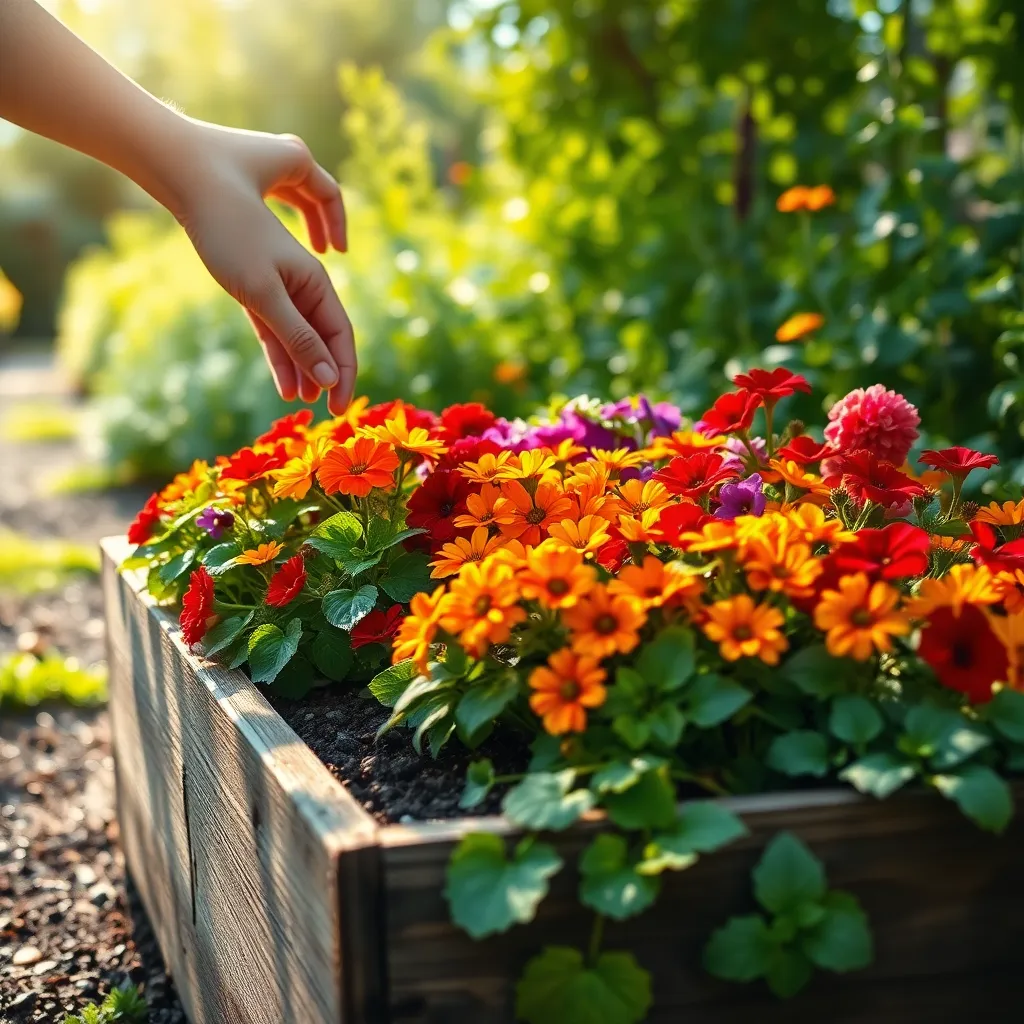
When choosing edible flower varieties, consider starting with easy-to-grow options like nasturtiums and violas. These flowers are not only visually appealing but also offer a peppery or sweet flavor that enhances salads and desserts.
Beginners should focus on selecting flowers that thrive in your local climate and soil conditions. Ensure your garden soil is well-draining and rich in organic matter to support healthy growth and vibrant blooms.
Sun exposure is another crucial factor; most edible flowers require at least six hours of sunlight per day. Plant your flowers in a location that receives ample morning sun and some afternoon shade to protect them from extreme heat.
For seasoned gardeners looking to expand their edible flower collection, try growing more exotic varieties like borage or calendula. These plants not only add unique flavors but also have valuable medicinal properties and attract beneficial pollinators to your garden.
Preparing Your Garden Bed
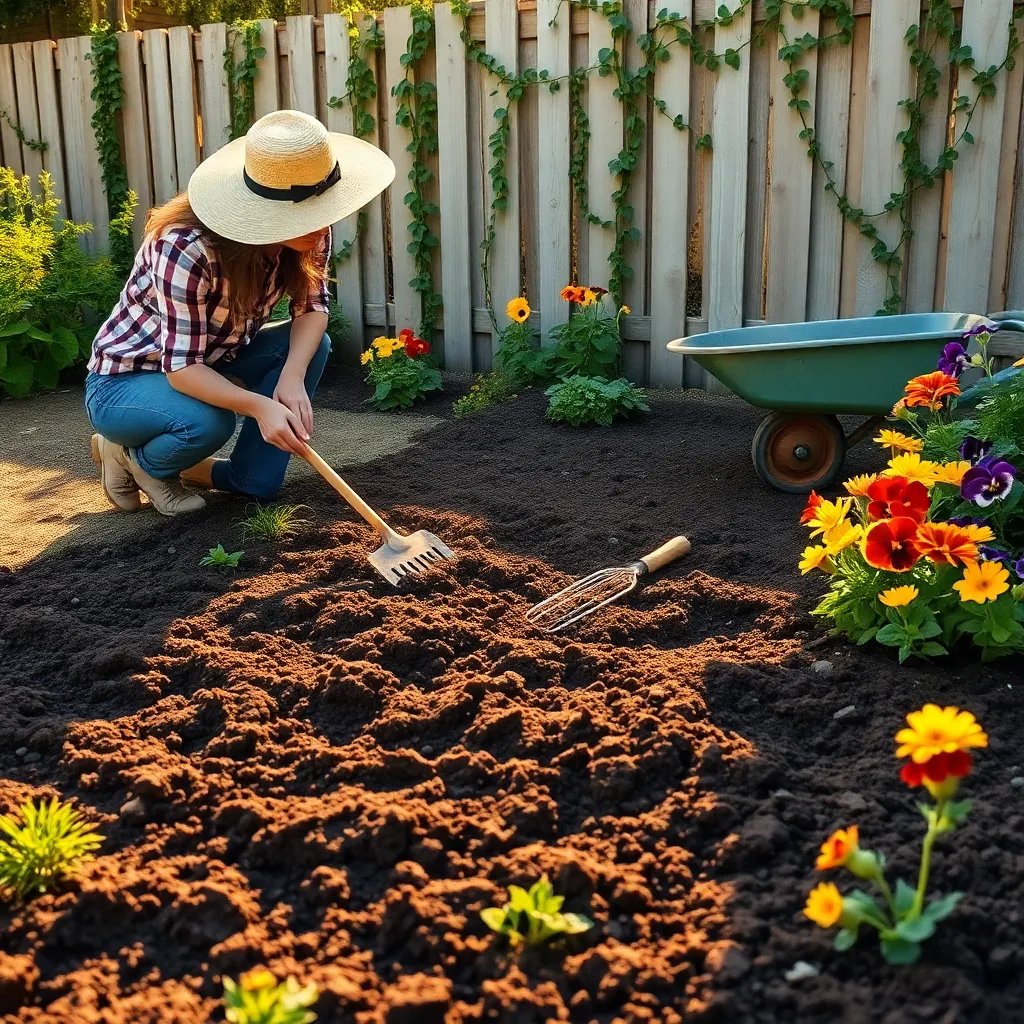
Before planting edible flowers, it’s essential to prepare your garden bed properly. Start by selecting a spot that receives at least six hours of sunlight per day, as most edible flowers thrive in full sun.
Begin by clearing the area of weeds, rocks, and debris to ensure a clean and healthy planting environment. Loosen the soil to a depth of at least 12 inches to promote root growth and drainage.
Amend your soil with organic matter such as compost or well-rotted manure to improve soil fertility and structure. This will not only provide nutrients but also enhance water retention, which is crucial for flower development.
For those in areas with clay or sandy soil, consider adding a soil conditioner to improve texture and drainage. Testing your soil pH can also be beneficial; most edible flowers prefer a pH between 6.0 and 7.0, which you can adjust with lime or sulfur as needed.
Planting and Spacing Guidelines
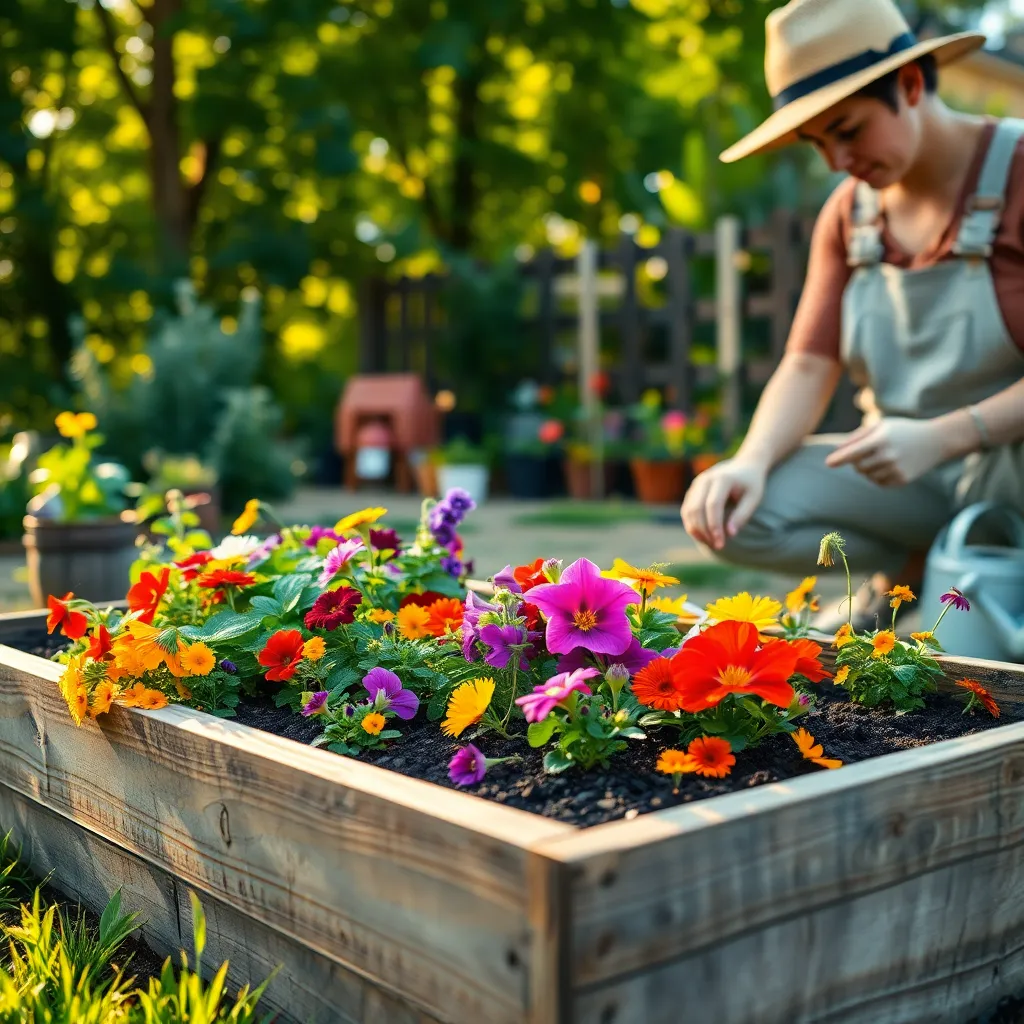
When planting edible flowers, consider the space each type requires to thrive. Proper spacing ensures each plant has access to sufficient sunlight, nutrients, and water. Understanding the growth habits of your chosen flowers will help in planning your garden layout. For example, nasturtiums can sprawl on the ground while borage grows upward, allowing for strategic use of vertical and horizontal space.
Start by consulting the seed packets or plant tags, which often provide recommended spacing guidelines. In general, allow at least 6 to 12 inches between smaller plants and up to 24 inches for larger varieties like sunflowers. This not only aids in proper air circulation, reducing the risk of disease, but also makes maintenance like weeding and harvesting more manageable.
To maximize space in smaller gardens, interplanting with compatible flowers can be effective. For instance, pairing low-growing calendula with taller plants like dill can optimize sunlight exposure and improve pollination. Be mindful to choose flowers that share similar water and soil preferences to simplify care routines.
Consider the timing of your planting to ensure a continuous harvest of blooms. Staggered planting, where new seeds are sown every few weeks, can provide a prolonged season of edible flowers. This method is especially useful for fast-growing varieties such as nasturtiums, ensuring fresh blooms throughout the growing season.
Finally, remember that soil type plays a crucial role in the health of your edible flowers. Most edible flowers prefer well-drained soil rich in organic matter, so consider amending your soil with compost before planting. Regularly check soil moisture and adjust watering practices as needed, keeping the soil consistently moist but not waterlogged, to support robust growth.
Caring for Edible Blooms
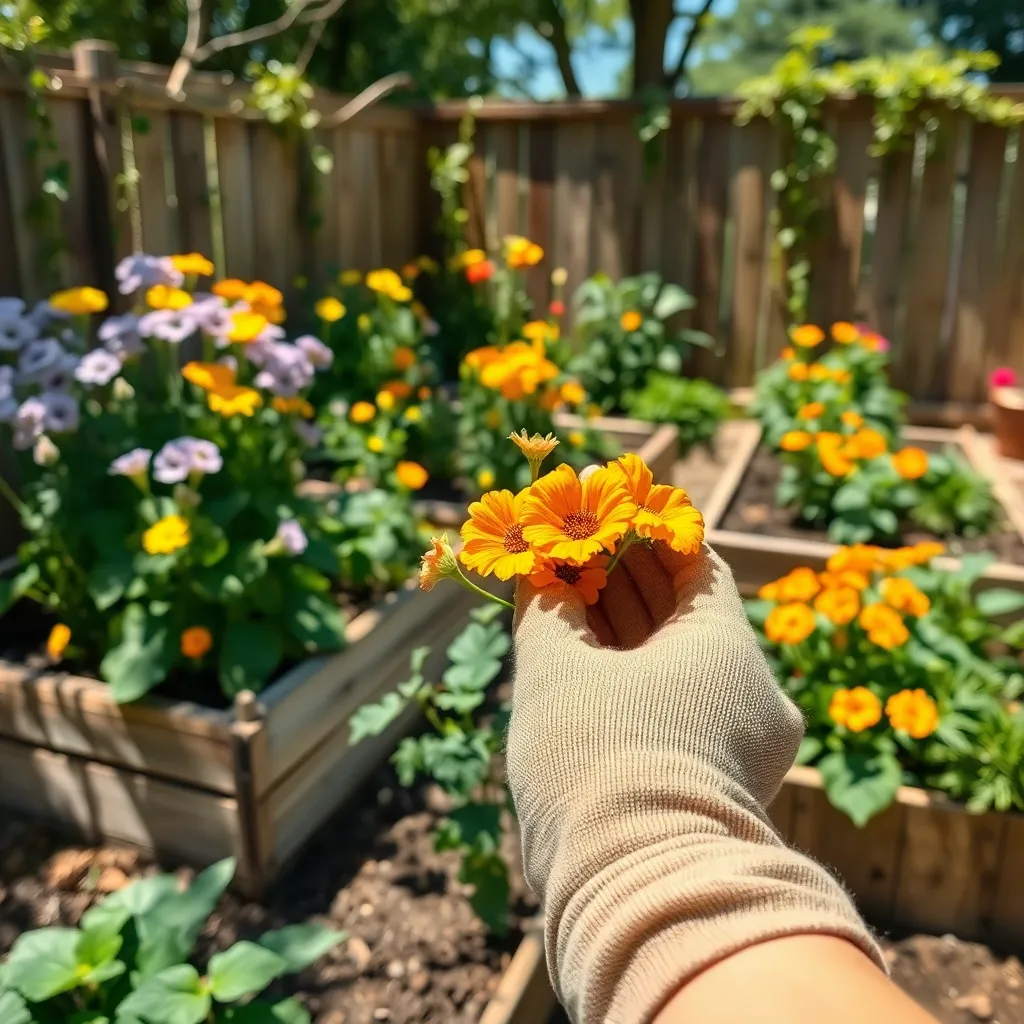
Caring for edible blooms requires attention to both watering and soil conditions. Ensure that your flowers receive at least an inch of water per week, adjusting based on rainfall and temperature.
Using the right soil type is crucial for healthy blooms. Opt for well-draining soil rich in organic matter, such as a mix of loam and compost, to provide essential nutrients.
Regularly check for pests, as they can quickly damage your edible flowers. Consider using natural pest control methods, like introducing beneficial insects such as ladybugs or using neem oil.
Deadheading, or removing spent blooms, encourages more flowers to grow. This practice not only enhances the plant’s appearance but also prolongs the blooming period, providing you with more edible options.
For those looking for a more advanced technique, consider succession planting to ensure continuous bloom production throughout the season. Stagger plantings every two to three weeks to keep a steady supply of fresh flowers.
Finally, always harvest your edible blooms in the morning when their moisture content is highest. This practice helps preserve their flavor and structure, making them perfect for culinary use.
Harvesting and Using Flowers
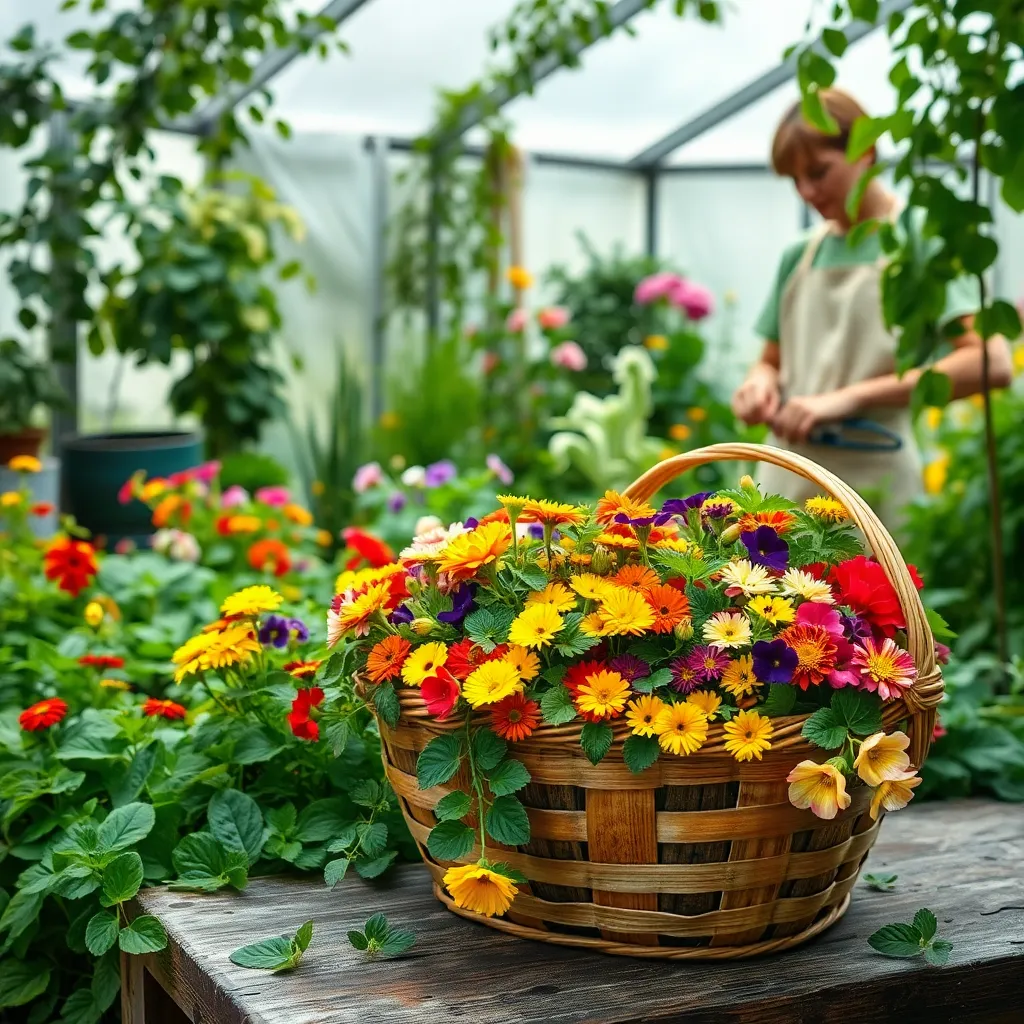
Timing is crucial when it comes to harvesting edible flowers for the best flavor and texture. Pick your blooms in the morning after the dew has dried but before the sun becomes too intense. This ensures that the flowers are fresh and retain their essential oils, which contribute to their flavor.
It’s important to use a pair of clean, sharp scissors or garden shears to cut the flowers. Aim to leave a short stem attached, which can help keep the flowers hydrated for a longer period. This simple step will help maintain the flowers’ freshness, making them more enjoyable to use in culinary applications.
Once you’ve harvested the flowers, it’s essential to rinse them gently in cool water to remove any dirt or bugs. Pat them dry with a clean kitchen towel or use a salad spinner to remove excess moisture. This process is critical, especially if you plan to use the flowers raw in salads or as a garnish.
Using edible flowers in your cooking can be both fun and rewarding. Consider incorporating them into salads, desserts, or even homemade teas for a splash of color and unique flavors. For a more adventurous approach, try crystallizing flowers like violets or pansies to use as decorative elements on cakes and pastries.
For those looking to experiment further, drying flowers is an excellent way to preserve them for future use. Spread the blooms on a screen in a well-ventilated area out of direct sunlight until they are completely dry. Once dried, store them in an airtight container to maintain their flavor and color for months.
Conclusion: Growing Success with These Plants
In “Growing Edible Flowers in Your Backyard,” we explored five key relationship concepts: the importance of patience and nurturing, the value of shared goals, the beauty of diversity, the role of communication in growth, and the joy of reaping what you sow. Just as cultivating flowers requires time and care, nurturing our relationships does too. By working together towards common goals, embracing each other’s differences, openly communicating, and celebrating milestones, we can create flourishing connections.
As an immediate next step, consider planting a small patch of edible flowers with your partner, friend, or family member. This activity will not only beautify your space but also serve as a tangible reminder of the love and effort you invest in your relationships.
Remember, relationships grow best when tended to with care and intention. Bookmark this article now as a convenient guide to revisit these insights whenever needed. By doing so, you’re investing in a future where your relationships thrive, just like a vibrant garden.
Look forward to a future filled with rich, rewarding connections, and remember: the seeds of today’s efforts are the blossoms of tomorrow’s successes. Your journey to thriving relationships begins now—take action, grow together, and watch your bonds blossom.
